1/ I enjoy doing this and appreciate the generous support I have received. I have lots of ideas and plans to add tools and services, so the more support, the sooner that happens. So, consider becoming a supporter, if you're not already.
2/ Know someone who might like to read this? Share it with them via the links at the bottom of the post.
As ever, the first item below goes to all members, and the last two are open to paid subscribers only.
01. The Wisdom of Teamsters
What happens when people decide an occupation has a fraught outlook? This is an important question given the nature of economic shocks in general. It is also pressing given what we see happening in many occupations that once looked appealing, and now, post- large language models (LLMs), look less so.
I won't weary you, or me, with the list of occupations most threatened by AI. That long ago stopped being interesting and now is mostly ghoulish. The trouble with much of this analysis is that it makes a central mistake: It treats workers as NPCs ("non-player characters"), which they are not.
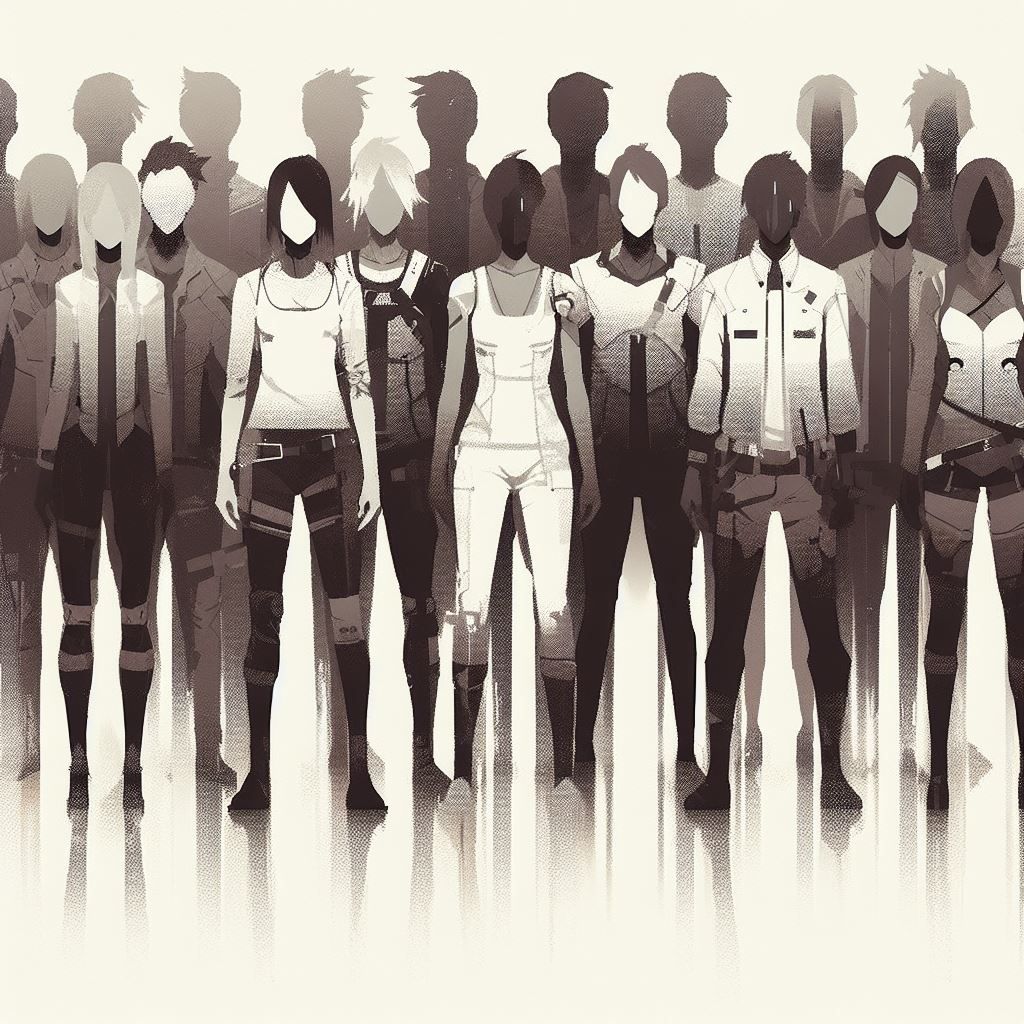
The term NPC emerged during the early days of video games to describe others you might encounter in the game, who weren't controlled by human players and thus lacked agency. In short, these automatons were sheep and they often did stupid things, even if they helped fill out the fantasy world of the game.
Too often analysis treats ordinary humans as mere NPCs in this economic drama, people without agency who wander around and have things done to them, not by them. They, to this way of thinking, will have AI done to them, and we are only left with tabulating the costs and consequences.
While there is some truth to that—people sometimes don't take action soon enough when faced with threats to their occupation, and there are many reasons for that—it is far from the whole story. People, as economists say, respond to incentives, and one of those incentives can be a gnawing dread that their chosen occupation is doomed.
To see why, let's go back to the emergence of the trucking industry. After World War I, there was a significant shift in vehicle production in the U.S. The military no longer required the vast production capacity it had during the war, leading to a surplus of military trucks. Many of these trucks were sold for civilian use, saturating the market until around 1921. Between 1918 and 1919, there was a nearly 300,000-unit increase in truck registrations as they were rapidly adopted for transportation and logistics.
Despite this growth in trucks, teamsters—who, as the name suggests, drove teams of horses for transporting goods—weren't initially affected. Census data shows only a slight decrease in teamsters by 1920; other professions tied to horse-driven transportation did worse. Hostlers and stablehands fell by more than half, as did hack drivers. It is worth noting that as passenger vehicles became more popular, the number of chauffeurs surged five-fold.
What happened to the workers? Older workers in adjacent occupations, who might previously have held jobs as carriage and hack drivers, were more likely to transition into teamster roles, as opposed to younger workers, who the data suggests shifted mostly to other occupations.
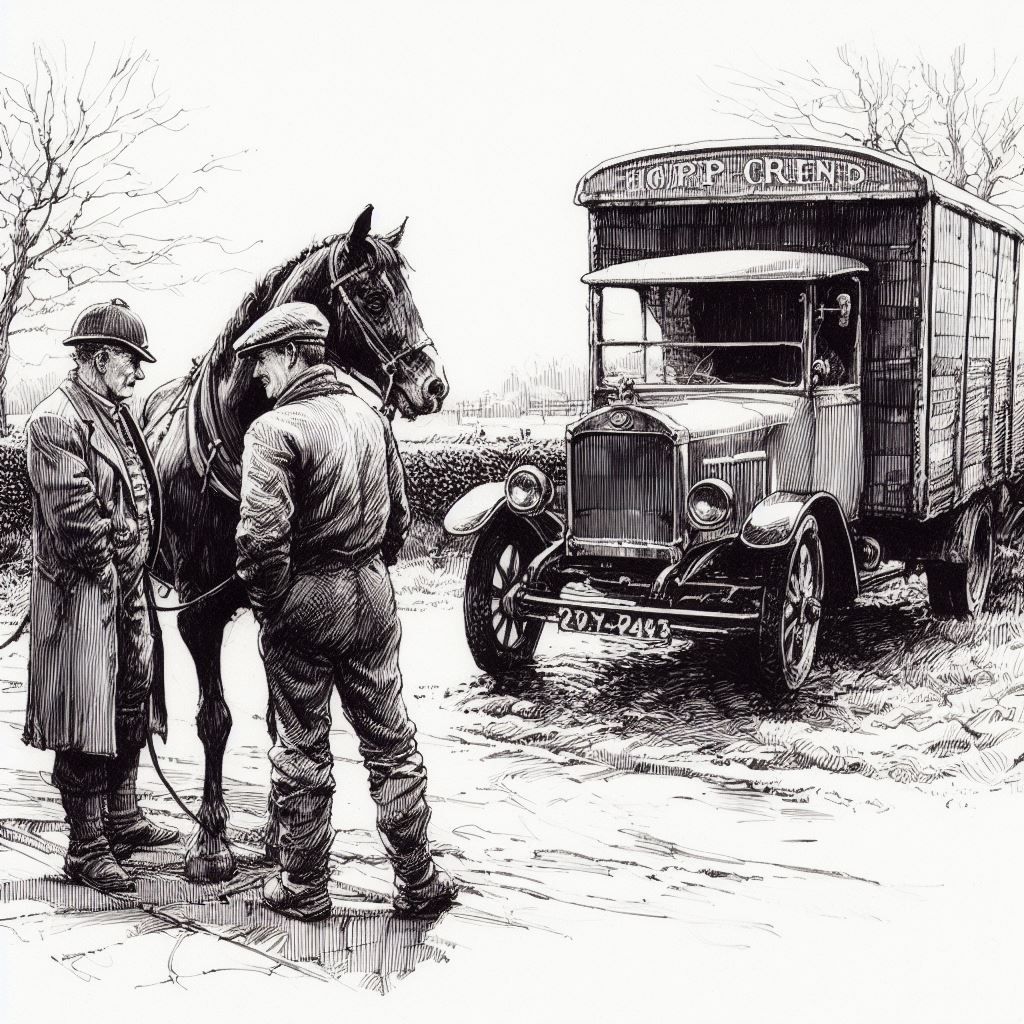
Everything accelerated, however, between 1920 and 1930. Technological advances such as pneumatic truck tires greatly improved the reliability and efficiency of trucks. By 1930 the number of teamsters had fallen 50% from the 2020 number. This was a dramatic change, and it only got worse from there. Being a teamster was no longer a viable career.
But were people caught by surprise? Did they see this coming? How would we know?
An intriguing new paper argues that there are two interlinked ways to test whether people saw this threat coming. First, as older workers stay in their jobs and younger people go elsewhere, we should see sharp aging among workers still holding those positions. After all, if fewer workers enter an occupation, those who remain get older. It's a mathematical certainty.
What do we see in the case of the teamsters as the threat from trucks emerged? As the following figure shows, the age of workers increased sharply. Compared to the 1900-1910 period, the 1910-1920 period (what the authors call the "anticipatory-dread period") the entry rate of 30-year-old workers has fallen to about 66% of the baseline.
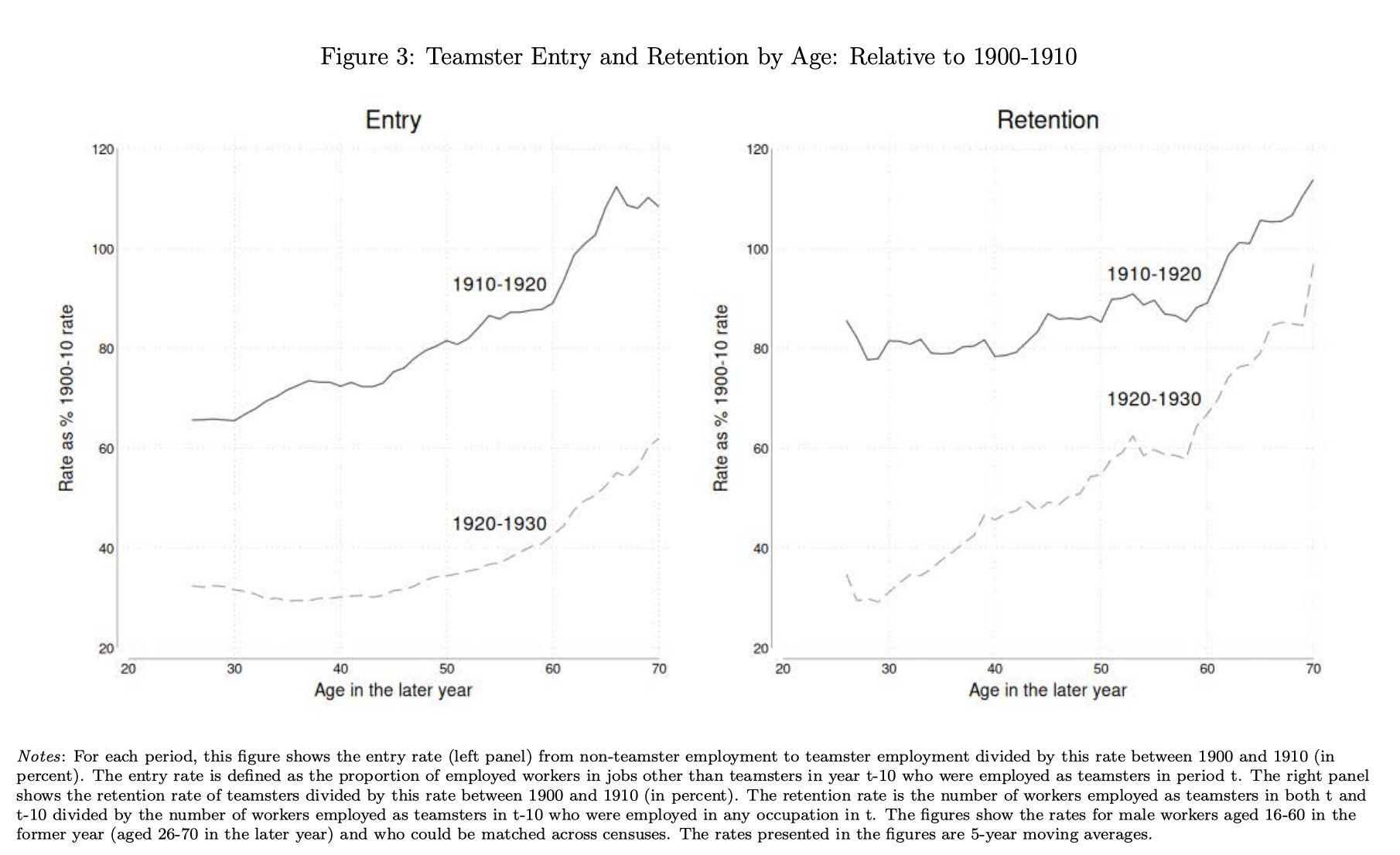
Interestingly, the oldest workers increased their entry rate during the period. As the authors suggest, they may have anticipated earning high wages and retiring before the teamster business became obsolete.
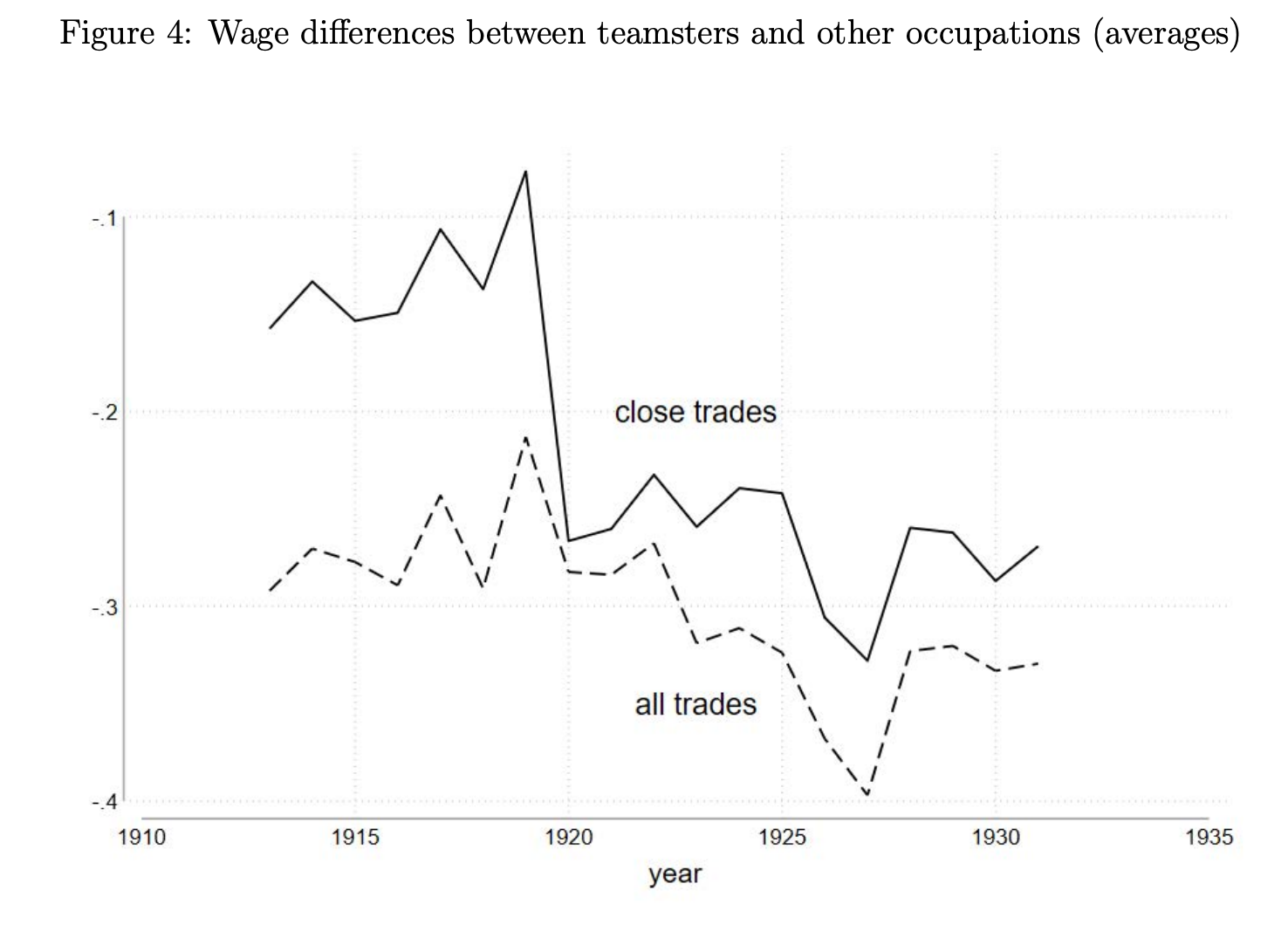
What relevance does this have to today? If humans are not NPCs, and if they see similar existential threats to their jobs, we might expect a similar pattern to play out. A threatened occupation would see an increase in wage rates and a simultaneous increase in the mean wage, both of which might be somewhat contrary to expectations.
And we do see that. The modern trucking industry is threatened by autonomous trucks, to the point that it is hard to imagine it existing in anything like its current form in a decade, if not sooner.
This first figure shows the share of truckers by age, and the oldest cohort is growing the fastest, especially more recently, when the share under age 50 has fallen off dramatically. This is, of course, reminiscent of what we saw happen with teamsters.
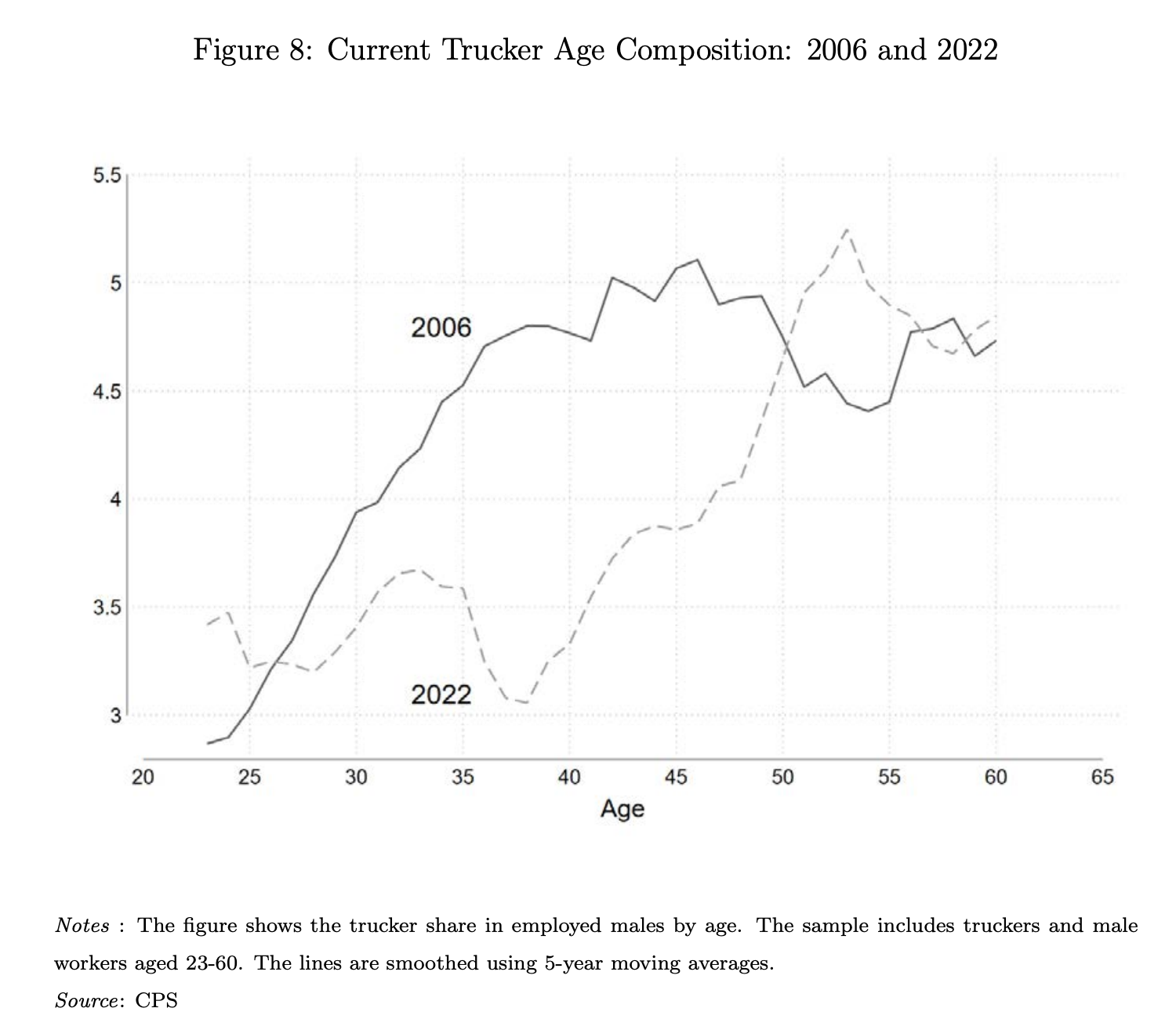
Completing the picture, we can look at income. Are the remaining truckers' wages rising anomalously quickly? Indeed they are, as a simple survey of headlines and anecdotal data will tell you. But we have the actual wage data: Trucker unemployment is low and falling, while wages are increasing. We might ordinarily expect that this would attract more young workers to the field, but it largely has not. Humans are not NPCs: they are making decisions based on their sense of the future of the occupation, at least in large part.
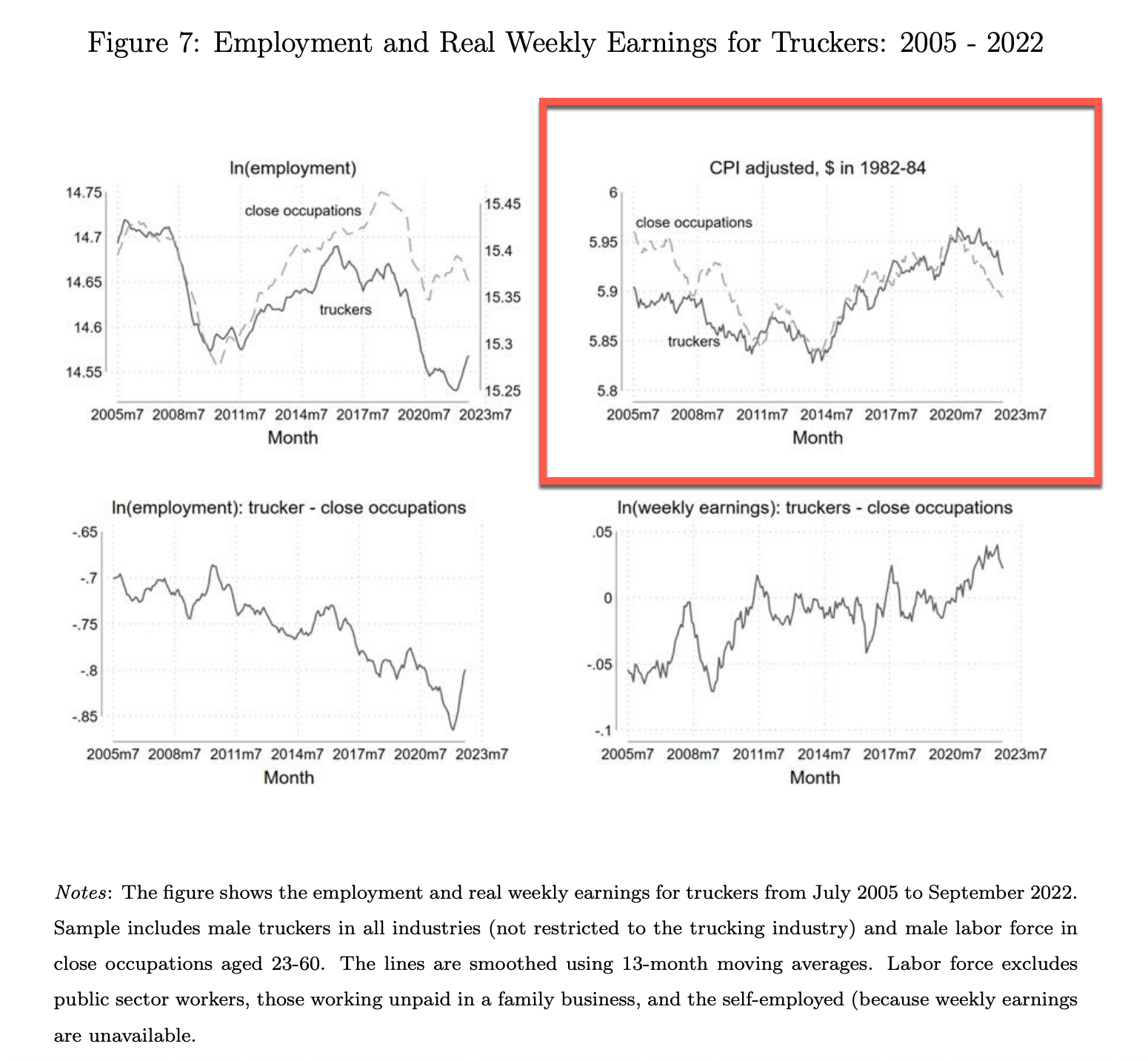
This is, of course, interesting in its own regard. While the sunny optimism that says technology always creates more jobs than it destroys is temporally bound at best, and wrong at worst; the rank pessimism that treats workers in threatened occupations as NPCs to whom things simply happen is a gross oversimplification. The reality is much more interesting, with people making continuous course corrections and decisions based on their evolving assessment of the outlook for their current occupation.
This suggests a broader implication. While we can look backward at how people behaved given such threats, we can also look forward. Crowds of people are assessing all available information and making the best decisions they can about their future livelihood. There is an important signal in that, and we should be paying attention. What occupations are aging fastest? What is happening to wages? Because if we see both going up it could be a sign that the "wisdom of teamsters" effect is in play: We may be seeing an occupation that is threatened, not one to which we should be directing young people given its seemingly anomalous wages.
02. Product Traps
During my long-ago graduate student work I spent a lot of time studying path dependence and lock-in. The former refers to where the past constrains the future. Do we have freedom, or has some old decision put us on this trajectory and decreased our scope for change?

